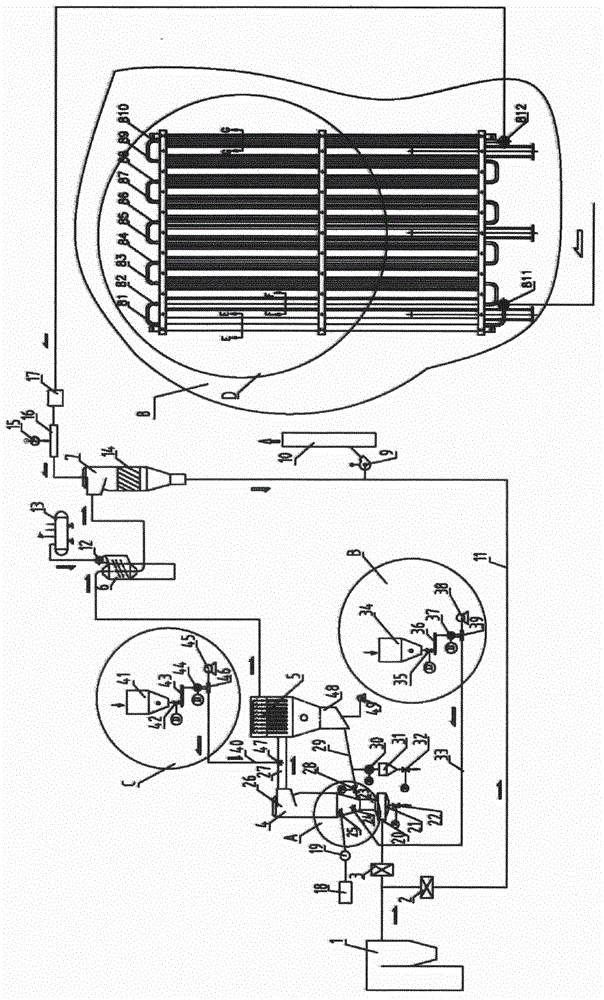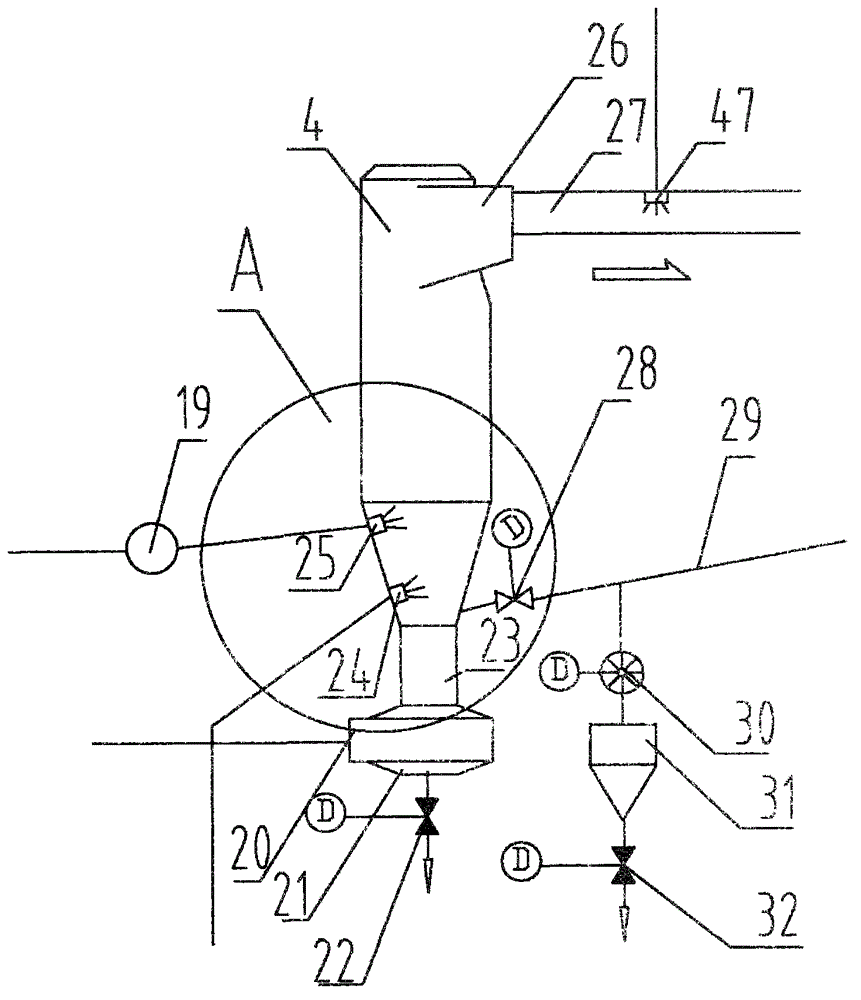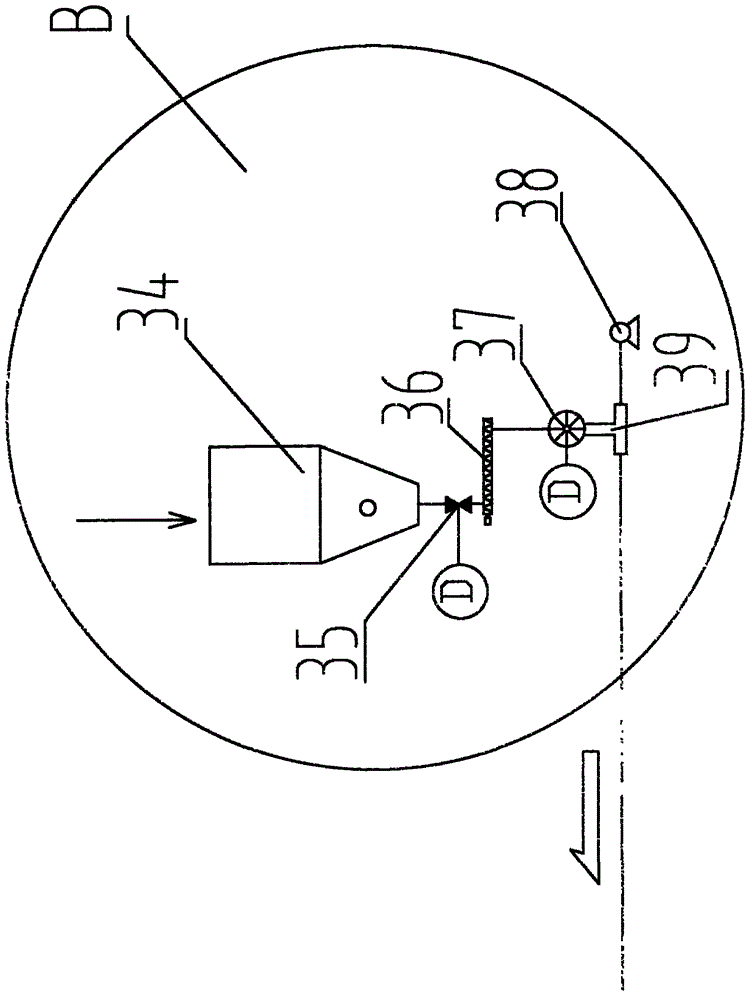Incinerator flue gas deacidification and denitration device
An incinerator and deacidification technology, applied in air quality improvement, dispersed particle separation, chemical instruments and methods, etc., can solve the problems of high operating cost, low denitration efficiency, system equipment blockage, etc., and achieve low investment and operating cost, denitrification. The effect of high efficiency and long service life
- Summary
- Abstract
- Description
- Claims
- Application Information
AI Technical Summary
Problems solved by technology
Method used
Image
Examples
Embodiment Construction
[0022] The present invention will be further described below in conjunction with the accompanying drawings.
[0023] Such as figure 1 , figure 2 , image 3 , Figure 4 , Figure 5 , Figure 6 , Figure 7 , Figure 8 , Figure 9 , Figure 10 , Figure 11 As shown, the present invention is an incinerator flue gas deacidification and denitrification device, comprising an incinerator 1, an electric air inlet valve 3, a reaction tower 4, a bag filter 5, a heat pipe heat exchanger 6, an SCR reactor 7, an ammonia gas The carburetor 8 is characterized in that: the incinerator 1 is sequentially connected with an electric air inlet valve 3, a reaction tower 4, a bag filter 5, a heat pipe heat exchanger 6, an SCR reactor 7, and an ammonia gasifier 8, and the incinerator A bypass pipeline 11 is connected between the furnace 1 and the inlet of the electric air inlet valve 3, the bypass pipeline 11 is connected to the inlet of the main fan 9, the outlet of the main fan 9 is conne...
PUM
 Login to View More
Login to View More Abstract
Description
Claims
Application Information
 Login to View More
Login to View More - R&D
- Intellectual Property
- Life Sciences
- Materials
- Tech Scout
- Unparalleled Data Quality
- Higher Quality Content
- 60% Fewer Hallucinations
Browse by: Latest US Patents, China's latest patents, Technical Efficacy Thesaurus, Application Domain, Technology Topic, Popular Technical Reports.
© 2025 PatSnap. All rights reserved.Legal|Privacy policy|Modern Slavery Act Transparency Statement|Sitemap|About US| Contact US: help@patsnap.com



